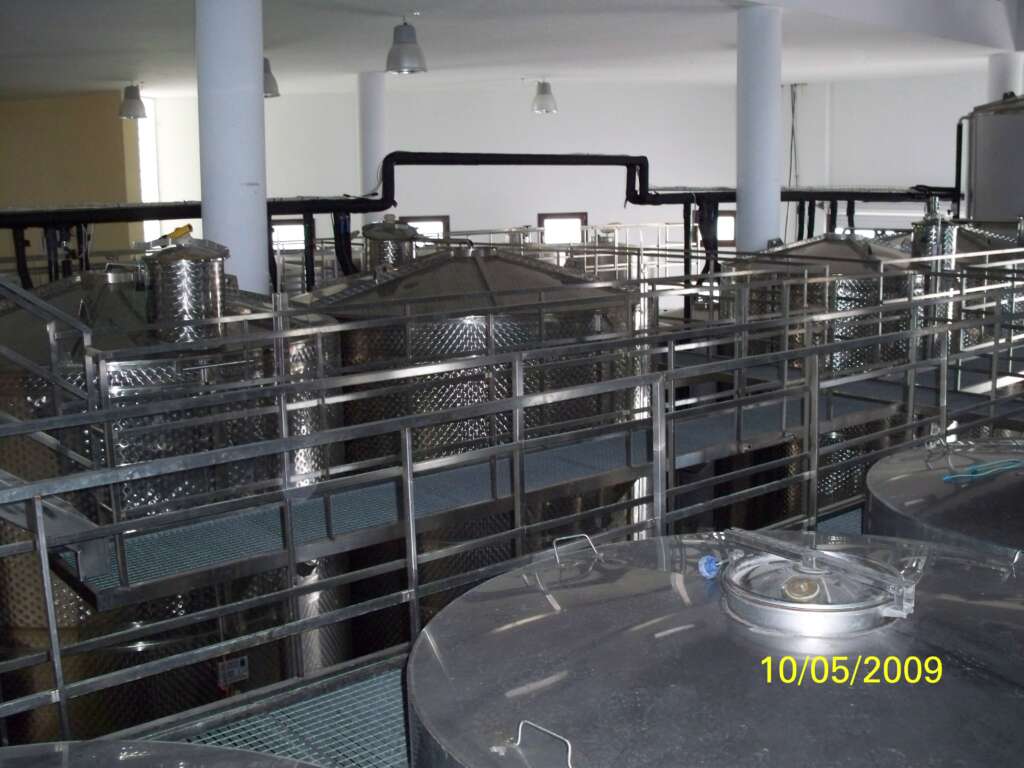It is the most useful of all wine “additives”. It has been known for centuries and was used long before its effect on wine was fully understood. In effect, the expression “sulfurisation” of the must or wine is not entirely correct. Sulphur dioxide (SO2) is added to the must or wine, not Sulphur. The burning of Sulphur wicks was widespread for disinfecting barrels and fermentation vessels. Burning, however, releases Sulphur dioxide:
S + O2 = SO2 (Sulphur and oxygen give us Sulphur dioxide)
Sulphur dioxide is not toxic when used in the correct amounts, as precisely defined by European legislation, always depending on the type of wine. In addition to wine, it is used in thousands of other foods as an antioxidant and preservative.
In Europe, it is allowed to use Sulphur dioxide as an additive in wine in the following forms:
Sulphur dioxide (SO2) – Sulphur dioxide, also known as E220
Potassium metabisulfite (K2S2O5), also known as E224
Potassium bisulfite (KHSO3), also known as E228
AUTHORISED LEVELS OF TOTAL/FREE SULPHUR DIOXIDE
FOR BOTTLED WINES INTENDED FOR CONSUMPTION (E.U)
160/50 mg/l Dry red
210/50 mg/l Dry white
210/50 mg/l Dry red with 5 g/l or more sugars
260/50 mg/l Dry white with 5 g/l of sugars or more
300/50 mg/l Spätlese, white Bordeaux Supérieur, etc.
350/50 mg/l Auslese, Commandaria, etc.
400/50 mg/l Trockenbeerenauslese, Beerenauslese, Ausbruch,
Sauternes, Graves Supérieures., etc.
The World Health Organization conducted a study on the “total Sulphur dioxide” levels in wine and concluded that current levels are safe.
Although the levels used are minimal and safe, they are nevertheless likely to cause allergies in sensitive individuals. This is why Europe, by EU law 2003/89 EU, requires the wine label to state “Contains Sulphur dioxide” for wines containing more than 10mg/l. This is mandatory for all wines bottled after 25th November 2005.
Sulphur dioxide is the most useful and widely accepted additive used in modern oenology because it has three main properties:
Antioxidant
The main reason for using Sulphur dioxide in wine is its antioxidant properties. It is well-known that to maintain the fruity character of the wine, we need to prevent oxidation. This is achieved by adding Sulphur dioxide, which combines with oxygen and protects wine from oxidation.
This association with oxygen is also self-destructive. One atom of oxygen destroys one molecule of Sulphur dioxide, resulting in its gradual decomposition, leaving the wine unprotected. Therefore, we should check and correct the levels, from the processing of the grapes to their bottling. The critical stage is bottling, during which the Sulphur dioxide must be adjusted to the correct levels (after analysis).
Prevents microbial spoilage
The most important antimicrobial role of Sulphur dioxide (SO2) is the destruction of acetic acid bacteria, which turn wine into vinegar. Acetic acid bacteria are aerobic and need oxygen to reproduce and survive. The addition of sulphur dioxide followed by filtration provides an immediate cure for any wine showing such an infestation. The role of sulphur dioxide, in this case, is twofold. On the one hand, it kills the bacteria directly, and on the other hand, it removes the oxygen they need to survive.
Sulphur dioxide can even inhibit the onset of malolactic fermentation or commonly known as “malolactic fermentation” (MLF), by destroying or inactivating the bacteria (lactobacillus) responsible for converting malic acid into lactic acid. It is a secondary fermentation that can be carried out on its own or induced by the winemaker and is, in my opinion, required for red wines. In Cyprus, the conduct of MLF fermentation in white wines is avoided.
Inhibits enzymic browning
If we cut or bite an apple, pear or any other white-fleshed fruit and leave it exposed to the air, it will soon “turn brown”. This is the result of the effect of enzymes acting as catalysts. In the case of fruits, must, or wine, the class of enzymes responsible for the dark colour are oxidases. Sulphur dioxide acts as a poison against oxidases, reducing the degree of oxidation of the wines while protecting the colour of white wines.
We should not ignore another property of SO2, which this time is not preventive like the previous ones mentioned above, but corrective. “Tired” wines, which were left unprotected by sulphur dioxide, are somewhat oxidised and start to smell like Commandaria and Sherry could be corrected and regain their aroma and freshness by adding sulphur dioxide. However, it is understood that nothing can be done without first performing a chemical analysis of the wine.
Conclusions
Sulphur dioxide is an additive used in hundreds of canned, fresh and frozen fruits, vegetables and juices, and dried or dehydrated products. Its use in wine is of great importance as it contributes substantially to preserving its qualitative and organoleptic properties. The levels are low and cannot affect human health. The allergic symptoms that some consumers may experience due to the presence of sulphur dioxide in wine result from the consumption of poor-quality bulk and table wines that unfortunately circulate on the market. There is, however, a small category of people who are sensitive to sulphur dioxide. This is why the indication on the wine label “contains sulfur dioxide” is mandatory.
A good winemaker uses sulphur dioxide very sparingly.
Dr Andreas Emmanouel

